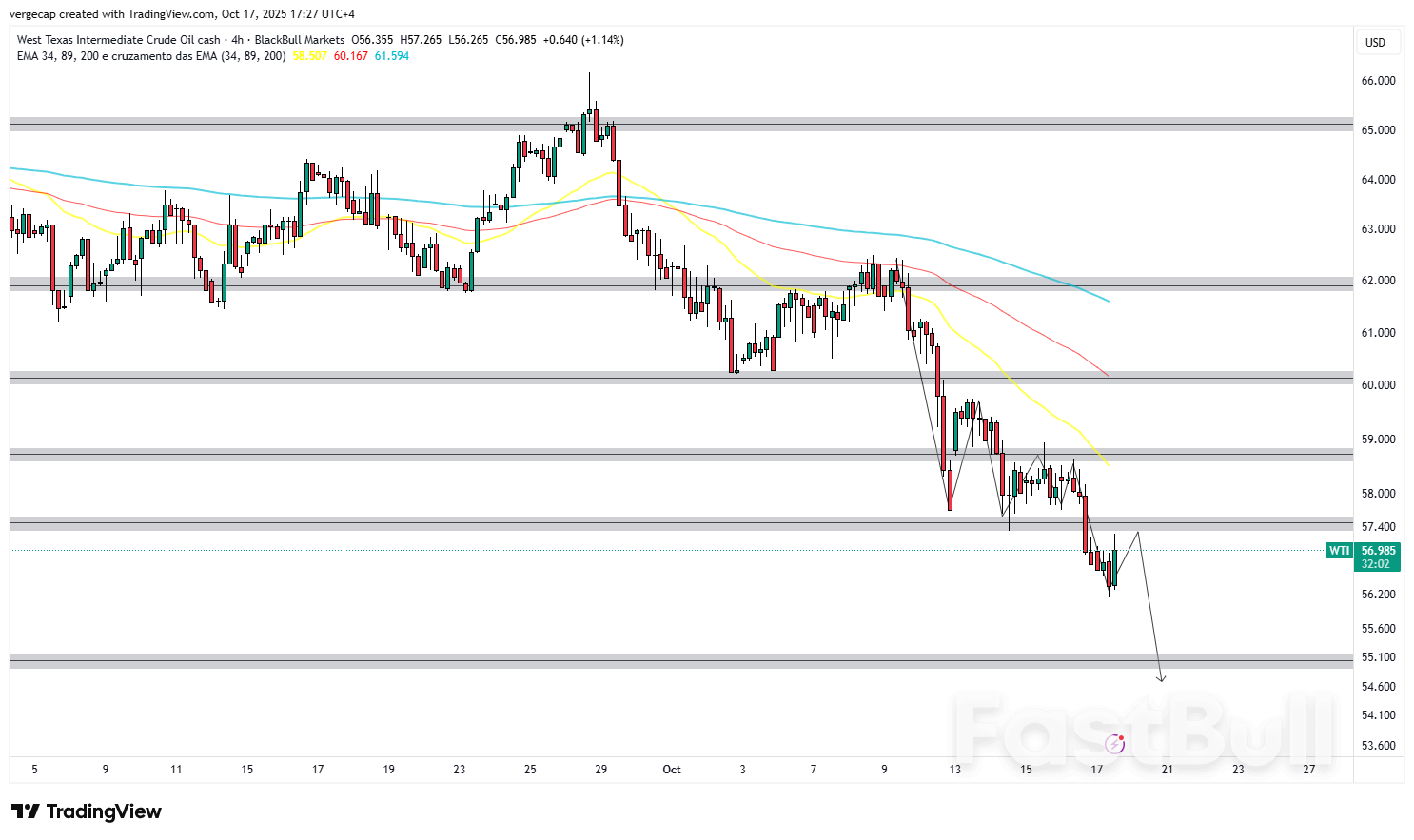West Texas Intermediate (WTI) crude oil extended its decline early Friday, trading near $56.50 per barrel during European hours, as traders weighed the prospects of geopolitical easing and mounting supply pressures. The US oil benchmark has been under sustained selling pressure, with sentiment weakened by rising stockpiles and signs that peace talks between the United States and Russia could temper fears of supply disruption.
According to a CNBC report late Thursday, former US President Donald Trump said he and Russian President Vladimir Putin had agreed to meet in Budapest, Hungary, to discuss potential measures to end Russia’s ongoing war in Ukraine. The news emerged just a day before Ukrainian President Volodymyr Zelenskyy’s scheduled visit to the White House, where he is expected to push for expanded US military and financial support for Kyiv.
The prospect of diplomatic dialogue between Moscow and Washington—long considered an unlikely breakthrough in the grinding conflict—sent a ripple through global commodity markets. Oil traders, who have largely priced in the risk premium from the protracted war, interpreted the announcement as a sign of possible de-escalation in Eastern Europe. That perception helped drag crude prices lower, with some analysts suggesting that the geopolitical risk premium embedded in oil could unwind if meaningful progress toward peace materializes.
“Concerns over tighter energy supplies were eased after it was announced that Trump would be meeting with Putin to discuss ending the war in Ukraine,” said Daniel Hynes, senior commodity strategist at ANZ. “Traders are starting to factor in the potential for a reduction in geopolitical tensions, which would naturally take some of the froth out of crude prices.”
Beyond geopolitics, fundamental supply data also weighed heavily on sentiment. The latest report from the US Energy Information Administration (EIA) showed that crude inventories rose more than anticipated for the week ending October 10, climbing by 3.524 million barrels. The build followed an increase of 3.715 million barrels the previous week and sharply exceeded analysts’ forecasts of just a 120,000-barrel rise.
The unexpected stockpile growth suggests that demand from refineries and end consumers may be softening amid elevated interest rates and a cautious global economic outlook. Analysts noted that refinery utilization rates have slipped slightly, reflecting lower seasonal demand and broader concerns about slowing industrial activity.
However, a potential bright spot for oil bulls comes from the monetary policy side. Expectations for another Federal Reserve rate cut later this month are offering a degree of support to the dollar-denominated commodity. According to Reuters, traders are now pricing in a 98% probability of a 25-basis-point cut at the October meeting, followed by a fully priced-in easing in December.
Rate cuts typically weaken the US dollar, making commodities priced in the greenback more attractive to foreign buyers. This dynamic could help cushion crude prices from further declines in the short term, even if broader market sentiment remains defensive.
“While the immediate impact of a peace dialogue and inventory build is clearly bearish, monetary policy could act as a counterweight,” said Warren Takunda, a market analyst. “A softer dollar environment tends to provide a floor for crude prices, especially if traders anticipate stronger liquidity conditions heading into the final quarter.”
Still, traders appear reluctant to chase any rallies. The broader narrative remains one of cautious optimism about global diplomacy tempered by persistent supply imbalances and uncertain demand growth. With China’s refinery throughput fluctuating and OPEC+ members struggling to maintain production discipline, the path for oil prices remains murky.
Technical Analysis
WTI crude oil’s price action reflects its conflicted fundamentals. The benchmark recently bounced modestly from its intraday low near the $56.35 support level—a price point that coincides with a prior technical target. The defense of this level provided some positive momentum, allowing the contract to retrace a portion of earlier losses as short-term traders capitalized on oversold conditions.
Momentum indicators such as the Relative Strength Index (RSI) have shown tentative signs of recovery from deeply oversold territory, suggesting a near-term corrective rebound could unfold. However, the broader technical structure remains decisively bearish, with prices still trading below both the 50-day and 200-day moving averages.
If WTI fails to hold above the $56.00 handle, the next support zone could emerge around $55.20, followed by $54.70. On the upside, immediate resistance stands near $57.30, with a break above that level potentially opening the path toward $58.50—a zone that previously acted as a pivot during late September trading.
TRADE RECOMMENDATION
SELL WTI
ENTRY PRICE: 56.80
STOP LOSS: 58.50
TAKE PROFIT: 54.70













